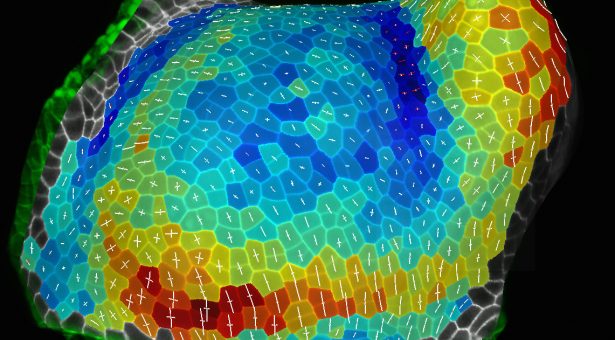Computer software to investigate the mechanisms of plant development

As plant scientists we want to understand the developmental processes responsible for the varied shapes of plant cells, tissues and organs that we see in the natural world.
We want to understand why plants take on the variety of shapes that they do. To do this requires a complete understanding of how genes control the physical properties of cells, enabling them to grow, change shape and divide, coping with the physical forces within the tissue, forces which can influence processes such as hormone signalling and gene regulation.
Key to this understanding is the visualisation and quantification of the tissue as it grows and develops which can provide essential clues to improve our understanding of these complex developmental processes which integrate a range of information from genetic to mechanical.
Extracting data from microscopy images helps us to understand the mechanisms at work within the plant.
The use of 3D images for this work involves a large amount of data which makes the process technically challenging, requiring a high level of computational power.
While 2D images are faster, easier and more intuitive to work with, they lack the capacity to fully quantify organ shape, which are often highly curved.
What is MorphoGraphX?
MorphoGraphX is a software application developed by the Dr Richard Smith research group to quantify gene expression and cell shape change in 3D confocal time-lapse image data sets.
MorphoGraphX works by creating curved surface images that follow the shape of the plant organ, for example leaves, sepals or the shoot apex. These “2.5D” images retain much of the simplicity of working with 2D images, yet are able to capture the sample curvature in 3D.
The method has enabled the quantification of growth and gene expression in systems where it was not previously possible and after already having an impact on researchers worldwide is under active further development in the Smith lab here at the John Innes Centre.
The impact of MorphoGraphX
- MorphoGraphX has enhanced global research capability, facilitating the quantification of plant developmental processes which wouldn’t otherwise be feasible
- Dozens of research groups internationally have used MorphoGraphX in their published work
- The software has facilitated the development of new theories in plant development for example to explain why epidermal cells have an irregular shape
The MorphoGraphX software has been designed in a modular format making it easy to work with existing libraries or to incorporate new algorithms.
It has been developed with its end users, experimental scientists, to ensure that it is fast and easy to use.
